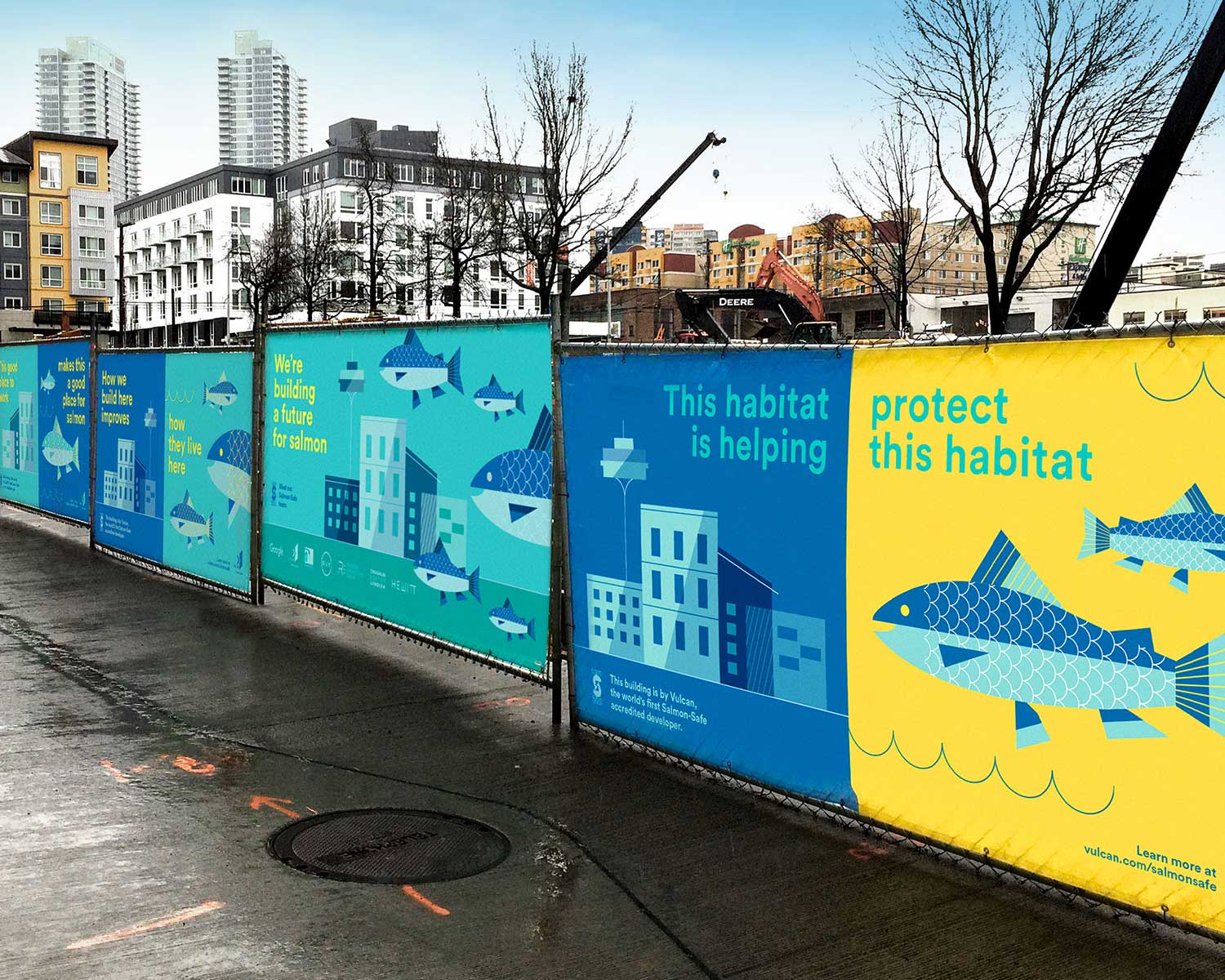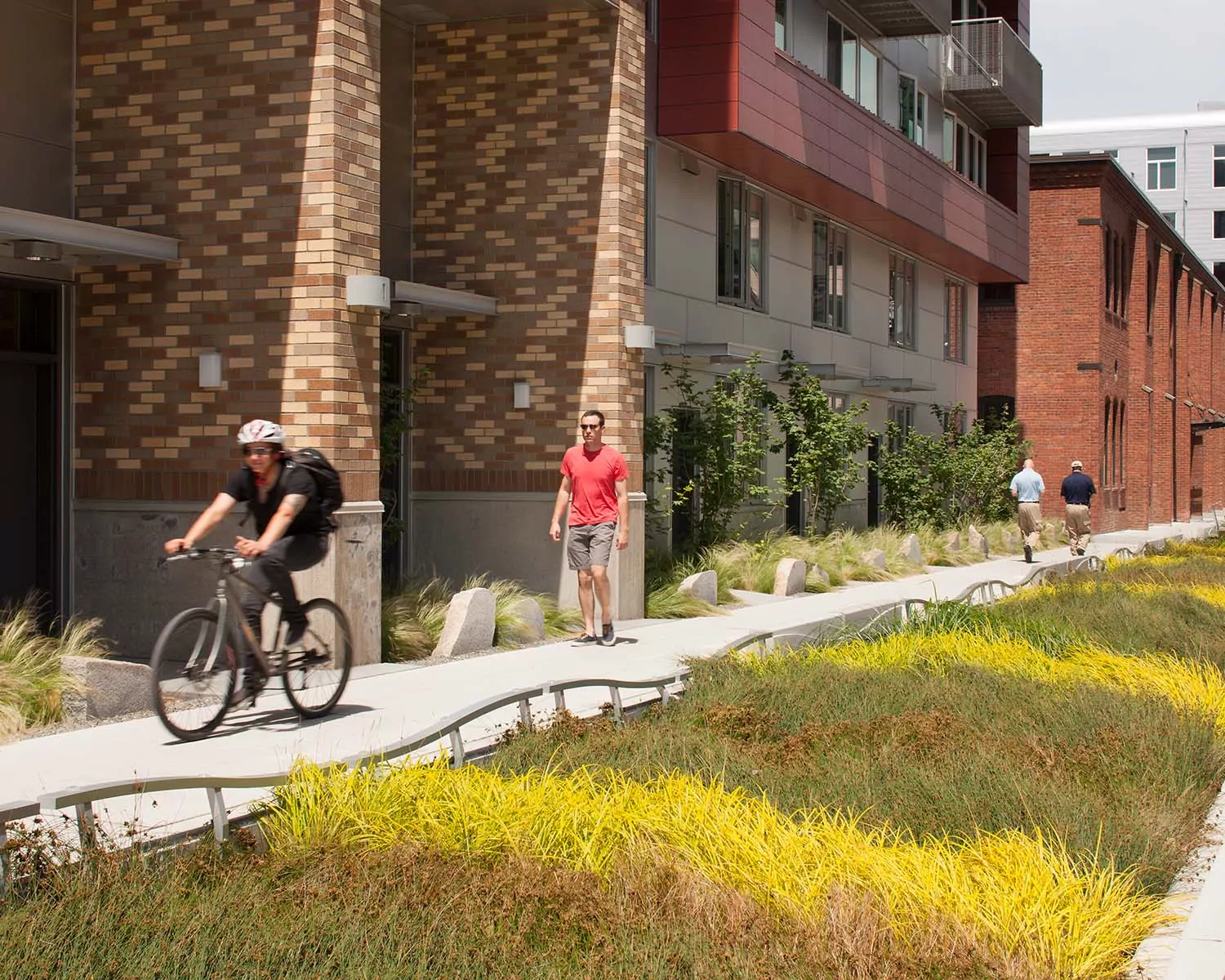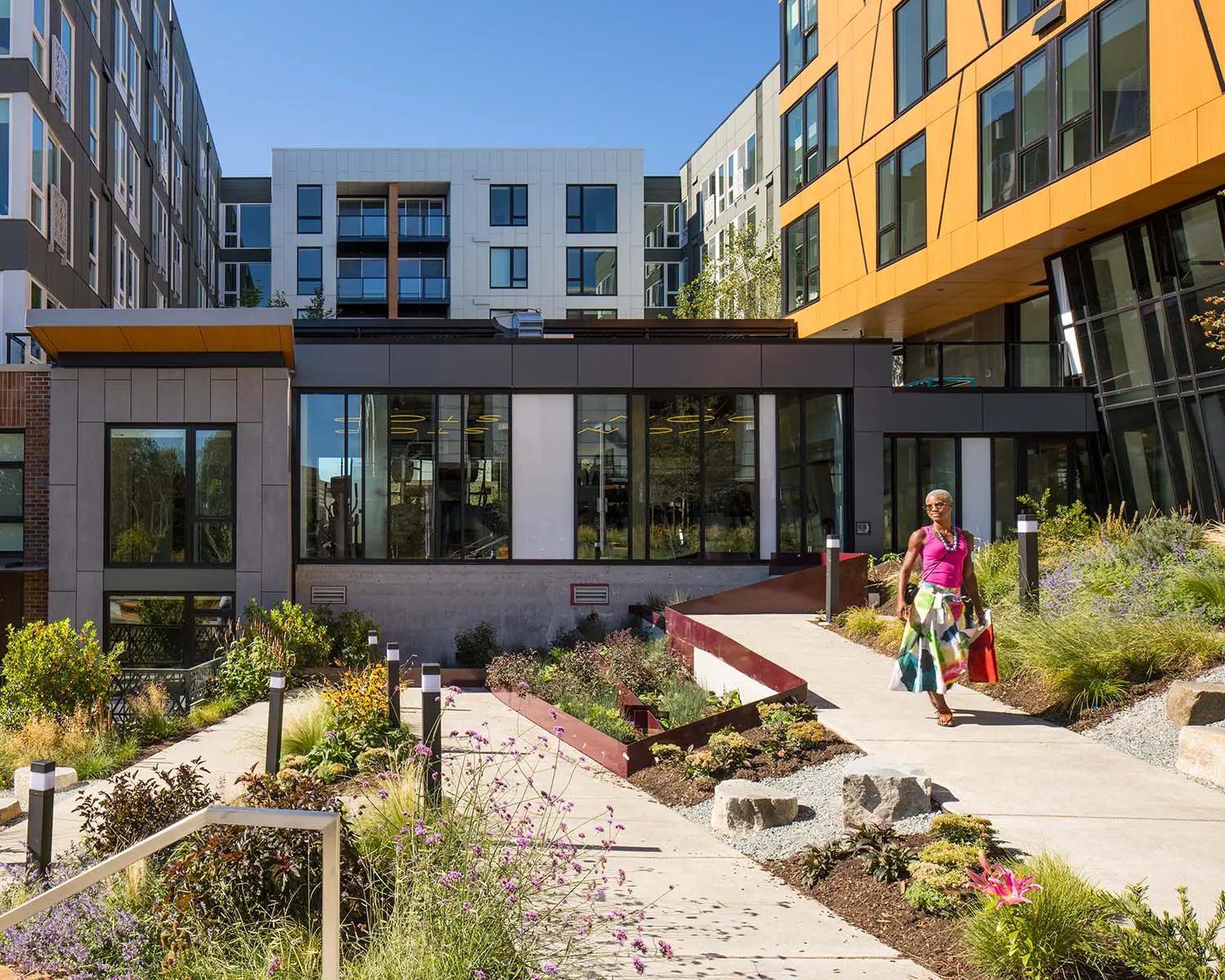
Founded on a deep commitment to sustainability, Vulcan Real Estate’s approach to adaptive reuse and historic preservation is visible throughout South Lake Union, which during the first half of the 20th century was home to many of Seattle’s light industrial uses.
Reusing existing buildings conserves resources and limits waste, while integrating historic structures into new projects honors the past and retains neighborhood character.
Vulcan Real Estate has completed six adaptive reuse projects in South Lake Union, five of which were designated historic landmarks.
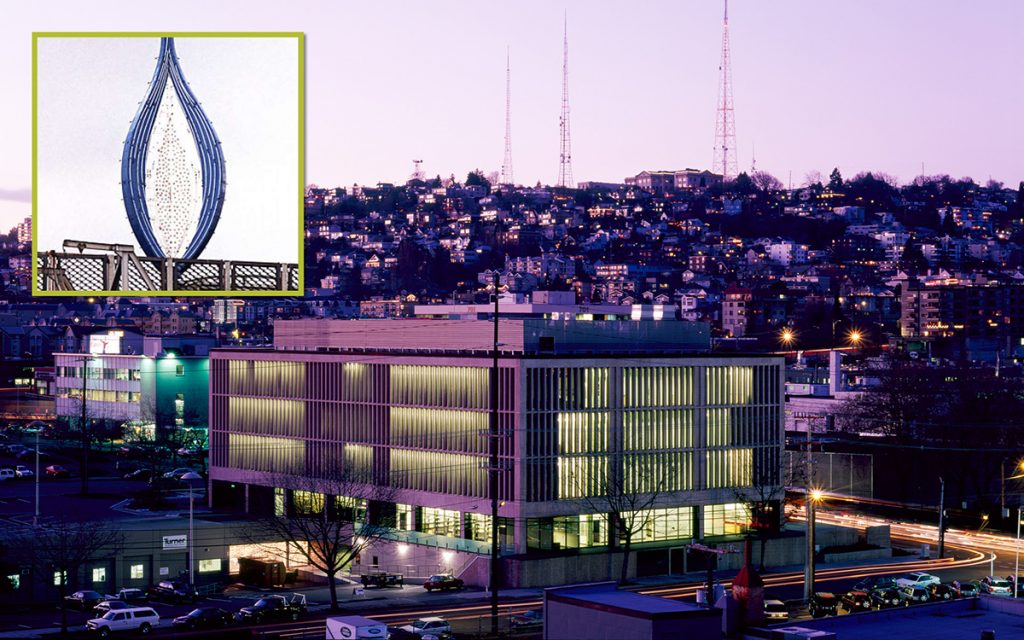
Blue Flame Building
In 2005, VRE completed a 105,000 square foot adaptive reuse of a former office building for the UW School of Medicine. The Brotman Building was the first of a seven-building campus totaling 1 million square feet, which houses the University of Washington’s research programs and facilities in addition to a neighborhood clinic. This five-story commercial building was originally constructed in 1964 as the headquarters for the Washington Natural Gas Company. This building was historically known as the Blue Flame Building because of the 26-foot-tall blue neon gas flame that rotated atop the building for nearly four decades and is now on display at the Museum of History & Industry.
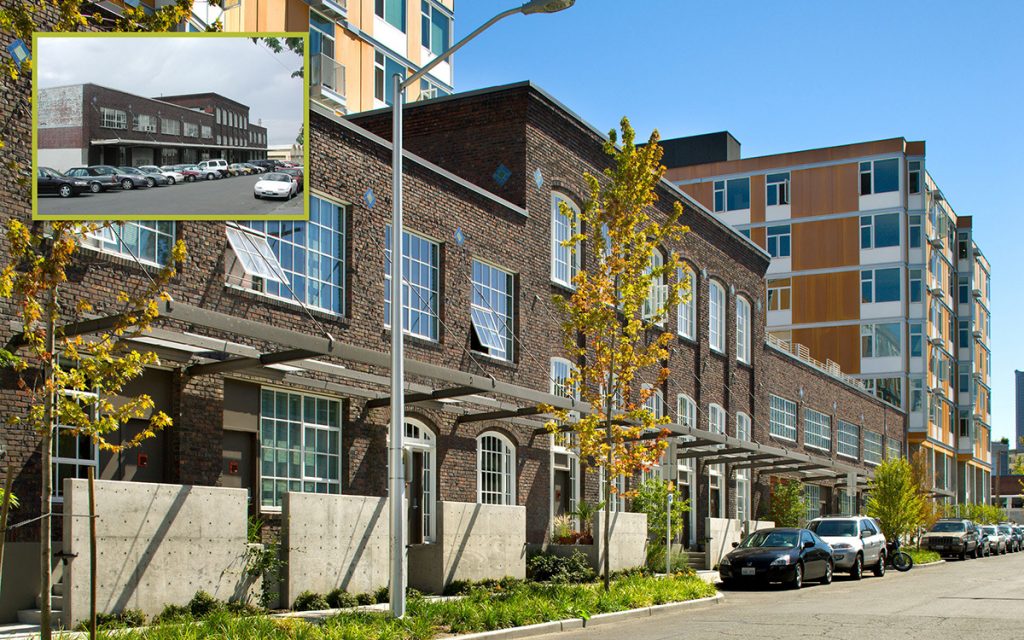
New Richmond Laundry Building
Located in South Lake Union’s Cascade neighborhood is Alley24, a 362,500-square-foot, mixed-use, full-block development with 172 apartments, 185,000 square feet of office and 28,000 square feet of retail space. Alley24 is reflective of the rich history of the area, commemorating the historic establishment of the original “Local 24” laundry workers union in the early 1900’s. The residential portion of Alley24 incorporates historical elements of the former New Richmond Laundry Building. Additional artwork was added to further honor the area’s past, including a mural of the laundry owner’s mascot “Ms. Prim” that was integrated into the new construction to create a contrast of vintage and contemporary features in Alley24’s residences.
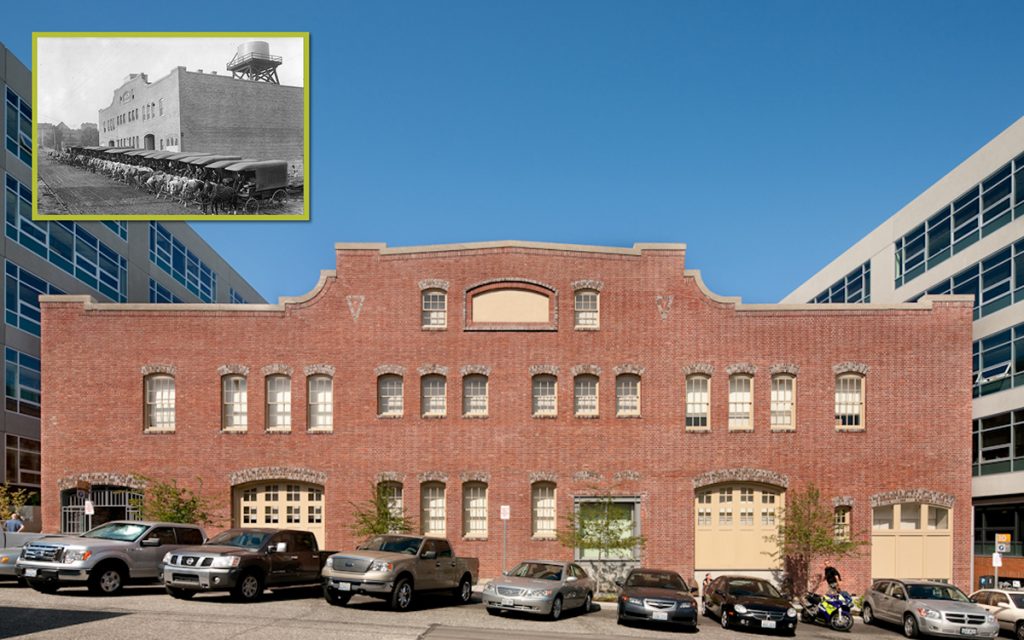
Van Vorst Building
The 14,000-square-foot brick Van Vorst Building was converted into a conference center as part of the Amazon campus. Built in 1909, the original brick building served as the Club Stables and had room for 250 horses. Over the years it was occupied by a variety of businesses. The longest-term tenant was the C. B. Van Vorst mattress factory, which occupied the facility from 1941 to 1974, giving the building its present name. VRE nominated and received landmark status for the Van Vorst building in 2000. Although the structure underwent a number of changes over the decades, with the addition of awnings and boarded up windows, VRE was able to restore it to its original splendor, including preserving the signage painted on the exterior façades.
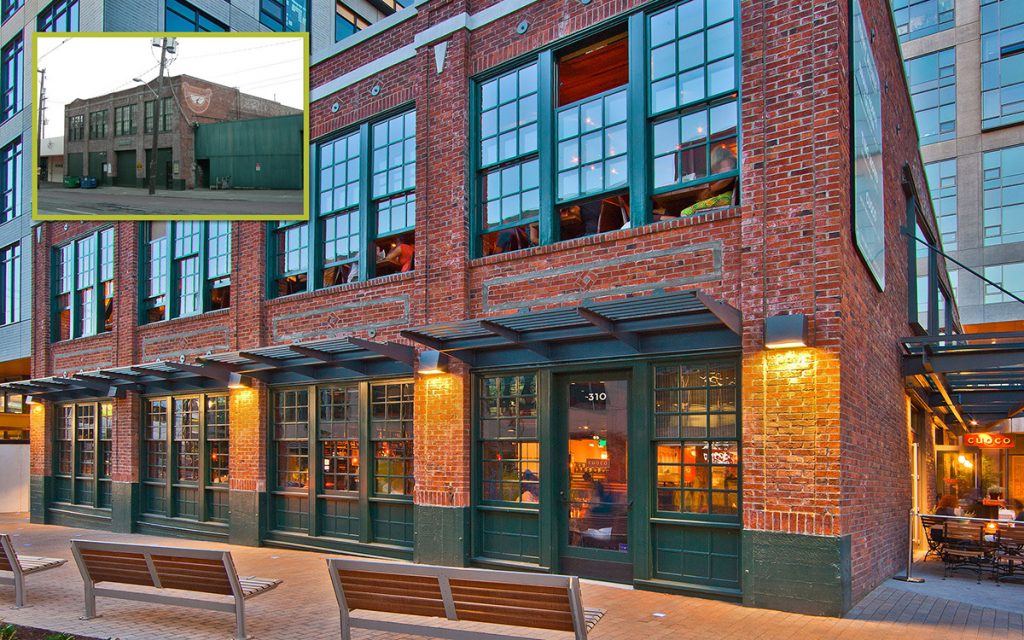
Terry Avenue Building
VRE fully restored the two-story 1915 Terry Avenue Building as part of the Phase IV development for Amazon. Formerly a cabinet manufacturer, the building was repurposed into a 17,000-square-foot venue and now houses two restaurants: Brave Horse Tavern and Cuoco, operated by veteran Seattle restaurateur Tom Douglas.
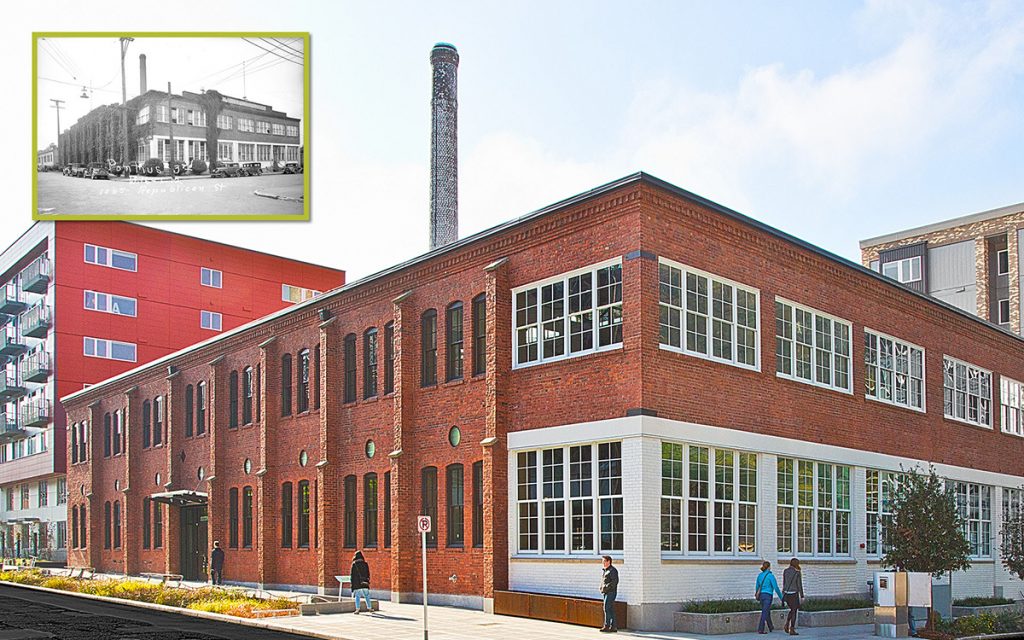
Supply Laundry Building
One of VRE’s most interesting historic renovation and adaptive reuse projects is the Supply Laundry Building, which was restored as part of the Stack House Apartments. Situated on a full city block and named for its 125-foot iconic smokestack, this project combines two new mixed-use residential buildings with the restoration and reuse of the original structure, a Seattle historic landmark listed on the National Register of Historic Places, as office space. The Supply Laundry was built in 1906 and was used as a working commercial laundry until the 1980s.
VRE preserved and restored the brick masonry exterior and structurally reinforced the iconic smokestack from the inside to maintain its industrial aesthetic, highlighting it as the cornerstone of the development. The building’s original wood windows were also restored, while existing mid-century aluminum windows were replaced with new energy-efficient single-hung windows that resemble the originals. In addition to these structural changes, VRE invested in ensuring the site served as a healthy environment for future visitors. The Stack House site was a brownfield, and extensive remediation was performed in order to address past environmental damage. The result is a combination of modern materials with traditional touches, showcasing the historical significance of the building while updating the interior to match and exceed the offerings of a modern office space.
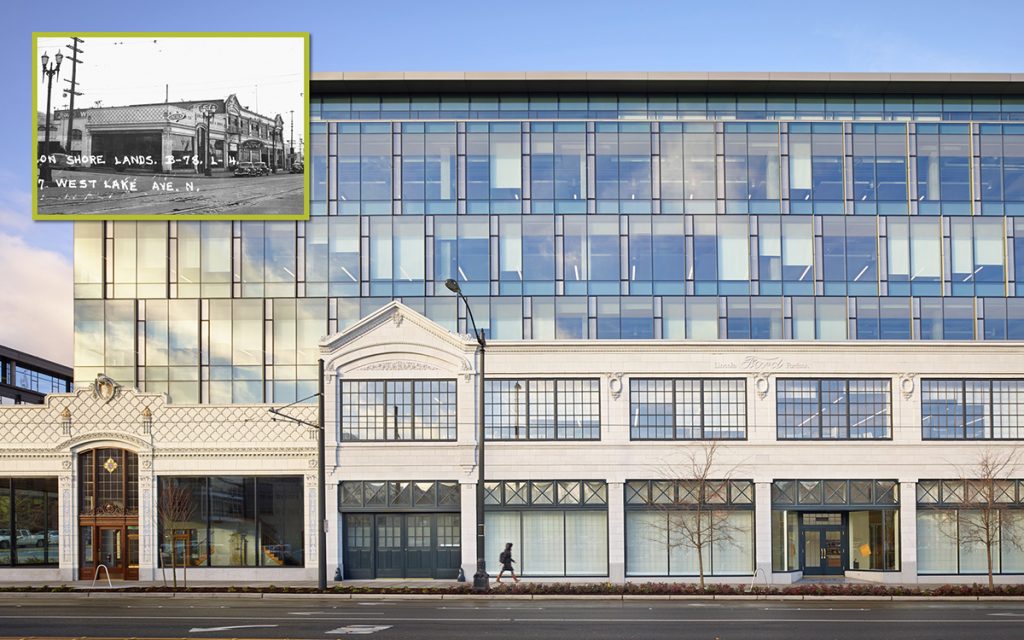
Pacific & Ford McKay Buildings
Perhaps the most ambitious of VRE’s historic renovations, the former Pacific & Ford McKay auto showrooms sit at the corner of Westlake and Mercer. By 1939, some 40 automobile-related businesses could be found on the 12-block stretch of Westlake Avenue near Lake Union. However, as years passed these buildings, which were built in the 1920s, were sinking and at risk of collapse. In addition, they were in the path of a major roadway project – the Mercer Corridor.
In 2006, VRE sought and obtained Landmark designations for the buildings, and then worked painstakingly to disassemble the historic elements (including both the exterior and interior tile work) in order to preserve them during the redevelopment process. Every piece was catalogued and put into crates, where they were stored for five years before being rebuilt on a site 60 feet north of their original location. The packaging of the historic elements required a complex catalog system with labels for every piece divided by zone. Every wall, plinth, pilaster, capital, and fluting was measured, and nearly 3,000 pieces of original terra cotta façade and other historic elements were carefully packed into 116 crates and catalogued before being transferred to storage. During the reconstruction process, VRE’s team relied on these records to determine whether a piece of terracotta or terrazzo came from the frieze, the ceiling, or the interior fountain.
Incorporating historic structures into new projects preserves the past and retains neighborhood character
In 2015, the reconstructed buildings were unveiled as part of the 270,000 square-foot life sciences building that is home to the Allen Institute, an independent, 501(c)(3) nonprofit medical research organization dedicated to answering some of the biggest questions in life science and accelerating research worldwide. Located on the northwest corner of Mercer Street and Westlake Avenue North, the building is an innovative combination of old and new which reflects the neighborhood’s history and character.
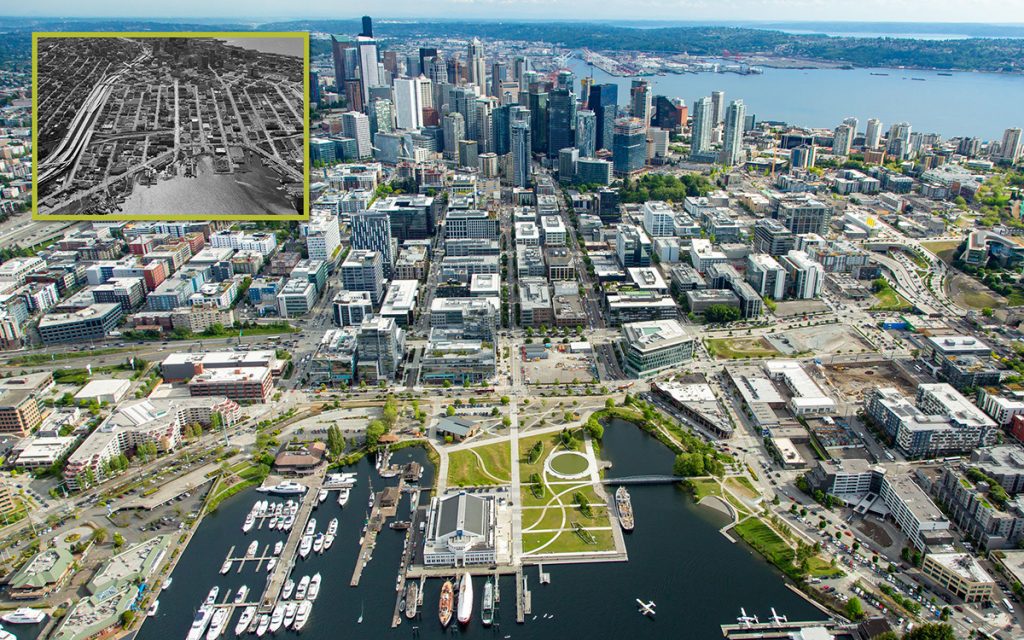
HistoryLink Walking Tour
Long before its recent reincarnation as an innovation hub, South Lake Union was home to many of Seattle’s most ground-breaking businesses. Preserving that history, while supporting the ongoing transformation of the area as a growing center for diverse industries, has been central to VRE’s development approach. Touring the neighborhood, the results of this strategy are a testament to the potential of combining old and new. In September 2019, online encyclopedia of Washington history, HistoryLink, hosted its annual luncheon, debuting a new walking tour of South Lake Union sponsored by Vulcan Real Estate. Through the three-mile tour, interested visitors and residents alike can learn more about the history of the neighborhood, and the remarkable changes that have taken place.


